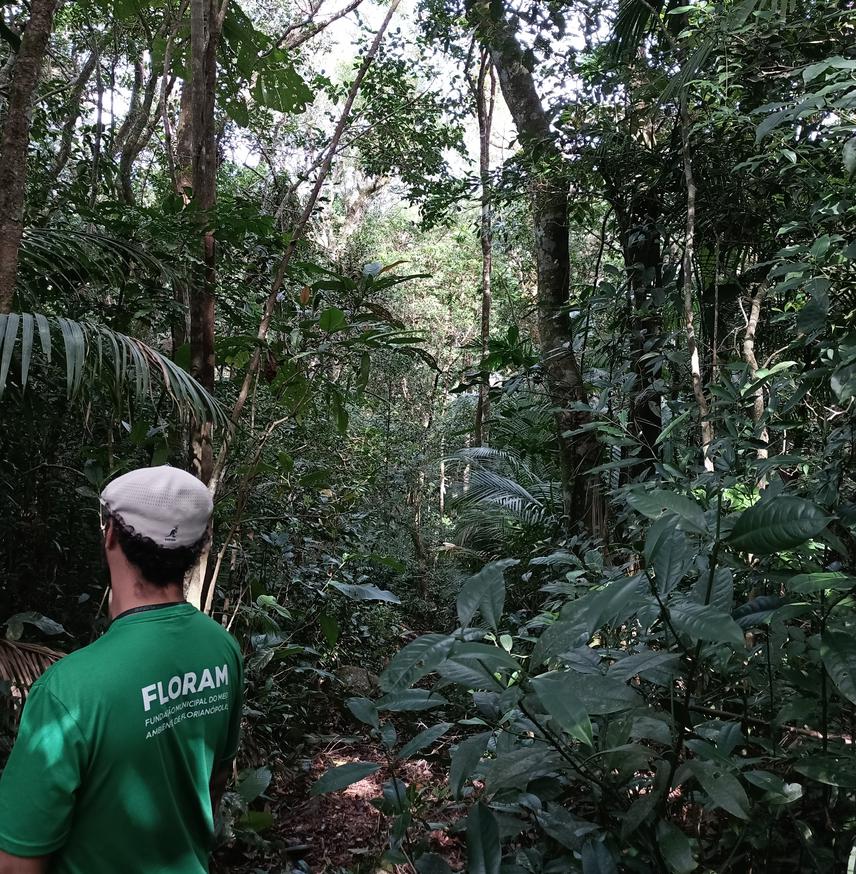Mirella Baldacconi Gondeck
Tropical forests are known for their great species richness and high degree of endemism, being, however, the most threatened biomes. Today, only between 11% and 16% of the original Brazilian Atlantic Forest remains, responsible for harbouring respectively 2.7% and 2.1% of the global total of endemic plant and vertebrate species, which includes this biome among the world's five priority hotspots for conservation.
In south Brazil, the Santa Catarina Island (insular part of the Florianópolis capital city of the Santa Catarina State) has 62% of its territory covered with native forest, most of it belonging to officially registered Protected Areas forming a mosaic of forest remnants which suffers great urban expansion pressure.

Forest interior at the Sertão do Ribeirão, one of the selected sites for frugivorous butterfly sampling, at the Municipal Natural Monument of the Lagoa do Peri, south of the Santa Catarina Island. ©Mirella Gondeck.
Butterflies are insects that together with moths compose the Lepidoptera Order. There are over 3,487 butterfly species in Brazil, two thirds of which are sheltered in the Atlantic Forest. They can feed on nectar, called nectarivorous, or can feed on fermented fruits, plant sap and other decomposing organic materials, therefore called frugivorous. Frugivorous butterflies are well established bioindicators for ecological and conservation studies. They can quickly respond to environmental changes in forest areas, hence gradients resulting from habitat fragmentation can alter the richness, abundance, diversity and composition of their communities.
Frugivorous butterflies will be surveyed on selected Atlantic Forest Protected Areas sites on the Santa Catarina Island, from north to south, along with environmental and geographic variables. We aim to evaluate the effects of habitat quality and connectivity on the diversity of frugivorous butterflies metacommunities, contributing with the conservation of the Protected Areas surveyed as well as counting on butterflies’ potential as ecological indicators.
Considering that butterfly studies are scarce on the Santa Catarina Island, this project can lead to the indication of vulnerable groups and to understanding which environmental filters, locaties and policies are most effective for conserving biodiversity. It will also contribute to environmental management by examining the effectiveness of municipal zoning regarding habitat connectivity and reinforcing the indication of priority areas for conservation. A frugivorous butterflies’ guide for the Santa Catarina Island will also be elaborated, containing photo identification and their distribution in the Municipal Protected Areas sampled.
Since we are working in partnership with the Florianópolis Municipal Environmental Foundation and the Santa Catarina Federal University, all information will also be shared with technicians, policy makers, Protected Area’s visitors, schools, scientists and the general public.
Header: Technicians and trainees of the Municipal Environmental Foundation and the Federal University of Santa Catarina at field work for sampling area recognition. ©Mirella Gondeck.